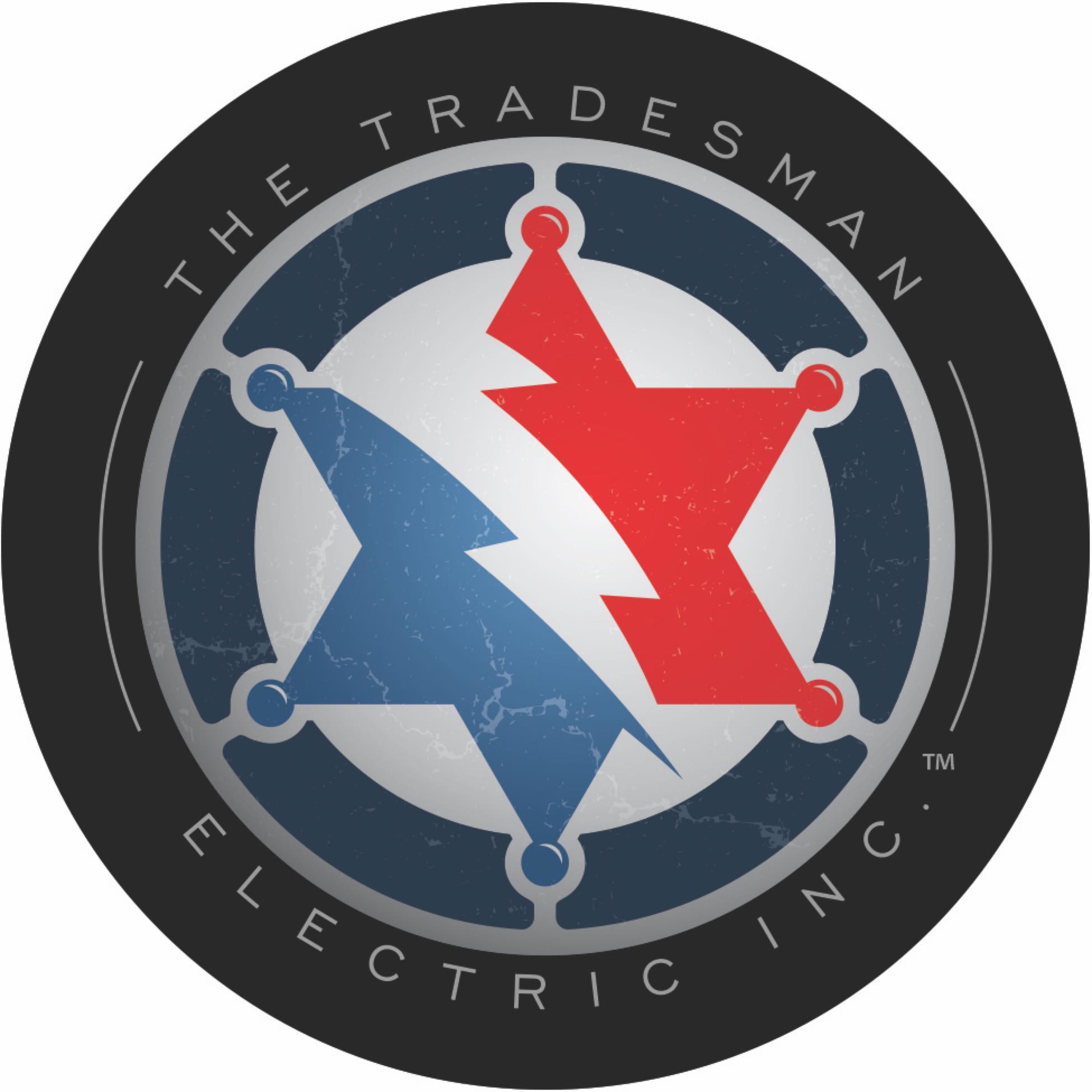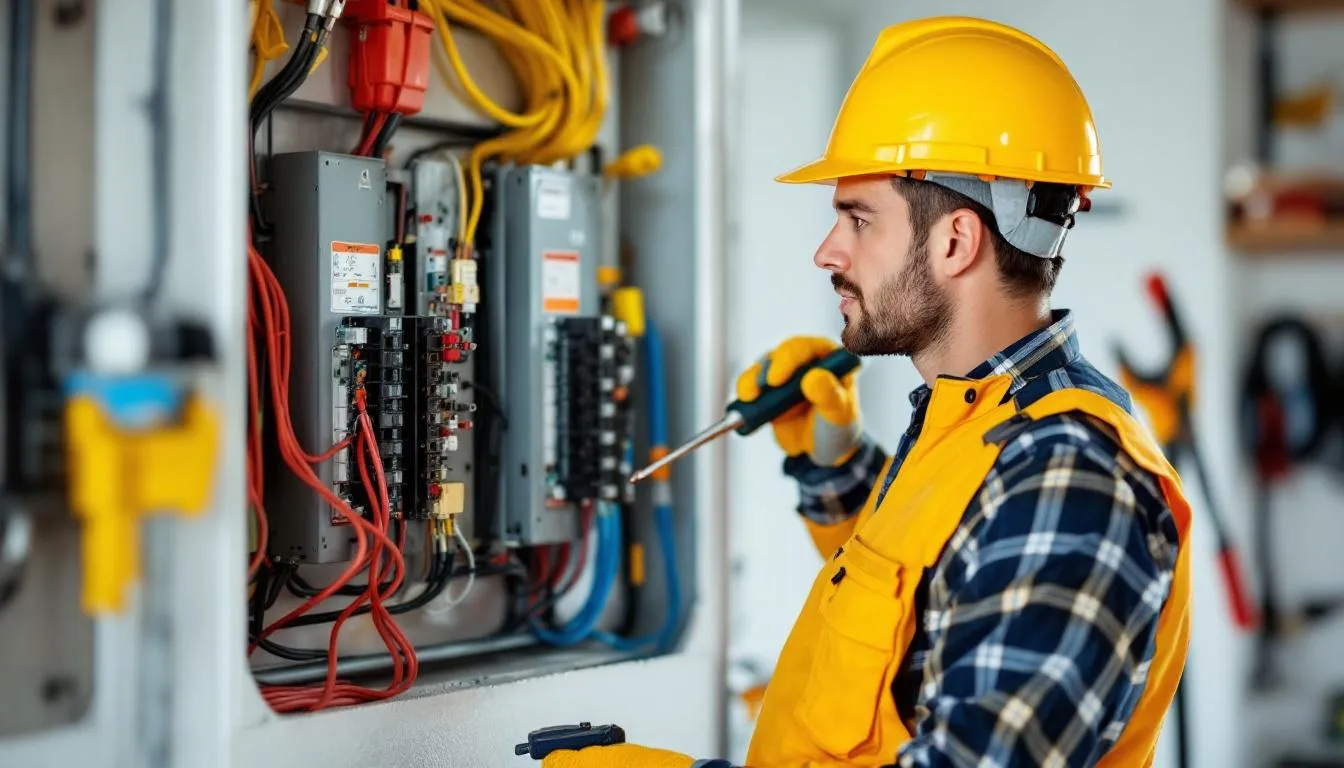Are you concerned about electrical panel safety in relation to electrical panel safety standards, codes, and NEC guidelines? This article will provide a clear overview of NEC’s electrical panel safety standards, including installation, maintenance, and compliance requirements. Understanding these guidelines is essential to prevent electrical hazards and ensure a safe environment for both residential and commercial installations.
Key Takeaways
- The National Electrical Code (NEC) sets vital safety standards for electrical panel installations, evolving regularly to mitigate hazards and enhance safety.
- Compliance with NEC guidelines, such as proper grounding, circuit breaker ratings, and clear labeling of electrical panels, is essential to prevent electrical hazards and ensure system reliability.
- Regular maintenance and inspections, along with professional expertise, are crucial in enhancing the longevity and safety of electrical panels while adhering to NEC standards.
Understanding NEC Electrical Panel Standards
The National Electrical Code (NEC) is the cornerstone of electrical safety in the United States. Key points about the NEC include:
- Established in 1897
- Continuously evolved to adapt to new technologies and safety challenges
- Ensures that electrical installations meet minimum safety requirements
- The primary goal is to prevent electrical hazards by codifying safety regulations governing the installation and operation of electrical panels
- Reviewed and revised every three years by the National Fire Protection Association’s Committee on the National Electrical Code to remain up-to-date with the latest safety standards
Compliance with NEC standards is not just about following rules; it’s about ensuring the safety and reliability of electrical systems. The NEC outlines fundamental guidelines for installing and maintaining electrical panels, emphasizing the importance of safe electrical wiring practices and the use of appropriate electrical equipment.
These standards are crucial for both residential and commercial installations, as they help prevent electrical hazards and ensure the safety of occupants. Understanding the NEC’s requirements is essential for anyone involved in electrical installations, from homeowners to professional electricians.
Importance of NEC Compliance
Adhering to NEC standards is vital for minimizing the risk of electrical accidents and enhancing overall safety. Adhering to these guidelines significantly reduces risks like electrical shocks, fires, and equipment failures. Compliance with the NEC not only protects property but also saves lives by preventing electrical hazards.
Hiring local electrical experts, such as Tradesman Electric, ensures that your electrical installations meet both NEC standards and local codes. Professional electricians have the knowledge and experience to ensure compliance, enhancing both safety and efficiency. Choosing qualified professionals ensures your electrical system is installed correctly and safely.
Key NEC Articles for Electrical Panels
The NEC provides essential guidelines to ensure that electrical panels operate safely and efficiently. One key article is NEC 408, which outlines the requirements for installing and maintaining circuit breakers and specifies the ratings of electrical panels to ensure safety under load conditions. This article is crucial for ensuring that electrical panels can handle the electrical load safely and prevent overloading and overheating.
Another important article is NEC 250, which details the grounding and bonding requirements for electrical panels in the current edition. Proper grounding and bonding are essential for mitigating electrical faults and ensuring the safety of electrical systems, as outlined in this chapter, with special consideration for best practices.
NEC guidelines also emphasize the importance of accessibility, stating that electrical panels should be placed in easily reachable locations with adequate clearance. These articles collectively ensure that electrical panels are installed and maintained to the highest safety standards.
Electrical Panel Location and Accessibility Requirements
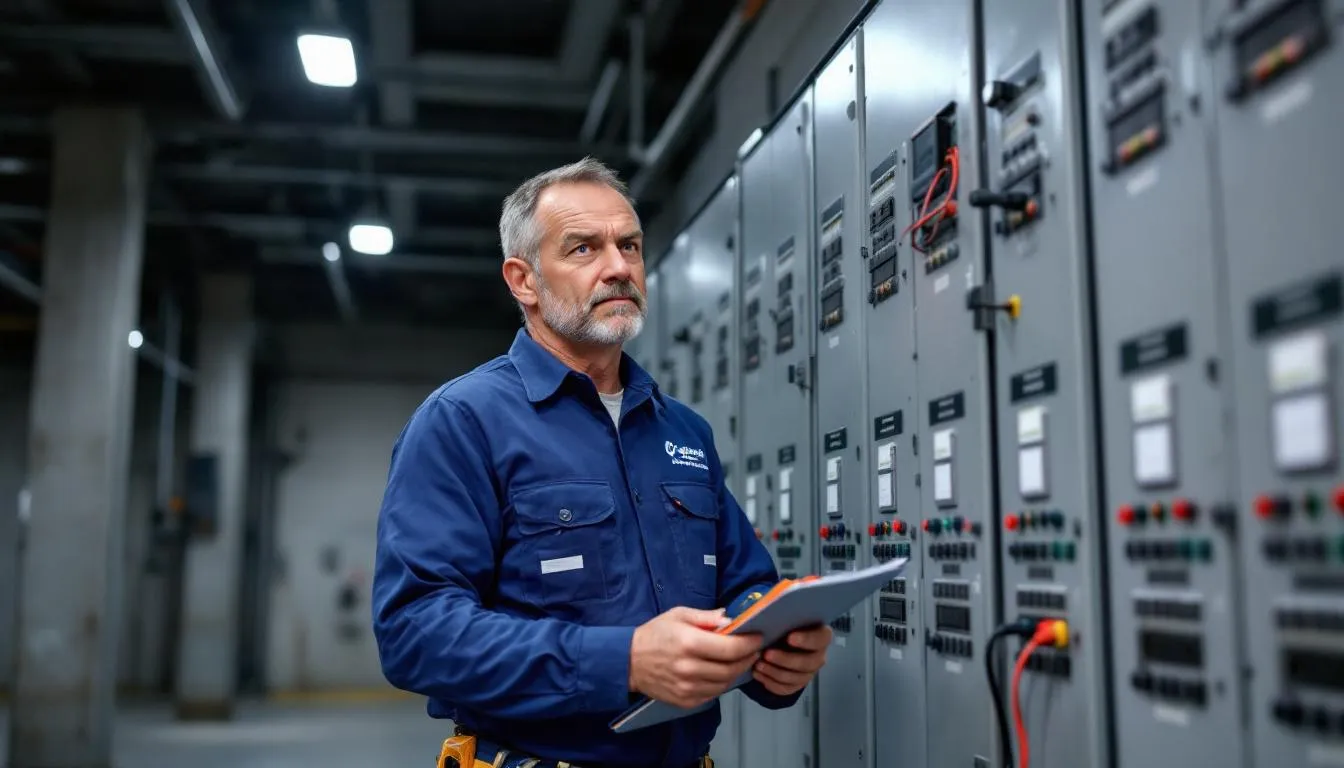
Proper location and accessibility of electrical panels are crucial for ensuring safety and compliance with the NEC. Key requirements include:
- Electrical panels must be easily accessible.
- They should not be located in confined spaces such as bathrooms, closets, or above stairways.
- Proper positioning and clearance around electrical panels are essential to ensure safe access and maintenance.
The NEC specifies that electrical panels must have a clear working space of at least 30 inches wide and 3 feet in front. This clearance ensures that electricians have enough room to work safely and that the panel doors can open fully.
In addition to clearance, the height and mounting specifications ensure that panels are accessible to all users, including those with disabilities and storage needs.
Minimum Clearance Around Electrical Panels
NEC Article 110 provides essential guidelines for working space and clearances around electrical panels. For low-voltage systems, the minimum clearance required in front of an electrical panel is 3 feet (0.9 meters). For voltages between 151 and 600 volts, the front clearance requirements can range from 36 to 48 inches. These clearances are designed to prevent electrical hazards and ensure safe access for electricians.
The requirements for workspace around electrical panels are:
- The minimum workspace width must be at least 30 inches (76 centimeters).
- If the panel width is greater than 30 inches, the required workspace width must match the panel width.
- The vertical clearance above an electrical panel should be 6 feet (1.8 meters) or to the height of the equipment, whichever is greater.
Ensuring proper clearance around electrical panels is crucial for maintaining safety and security in the workplace and to protect people from preventing accidents.
Height and Mounting Specifications
According to the NEC, electrical panels must adhere to the following requirements:
- Must not be installed higher than 6 feet 7 inches (2 meters) above the finished floor.
- This height requirement ensures safety and accessibility.
- Ensures that circuit breakers are easily accessible for all adults in a household.
- Panelboards should be installed according to the listing of the panelboard to meet NEC standards.
The recommended height range for operating handles of circuit breakers in outdoor electrical panels is between 4 feet to 6 feet 7 inches. Outdoor panels should be mounted at a height that ensures accessibility while protecting them from environmental hazards.
Proper mounting height and specifications are essential for ensuring that electrical panels are safe and accessible for all users.
Grounding and Bonding for Electrical Panels
Grounding and bonding are critical components of electrical safety, as they help mitigate electrical faults and ensure the safety of electrical systems. Proper grounding ensures that any electrical surges are safely dissipated into the earth, while bonding ensures that all metal parts of the electrical system are connected to prevent potential shock hazards.
The NEC outlines specific requirements for grounding electrode systems and the separation of neutral and ground bars to ensure optimal safety.
Grounding Electrode System
A grounding electrode system consists of components such as ground rods, metal water pipes, and concrete-encased electrodes that connect to the earth for electrical safety. According to NEC 250, a grounding electrode system must include multiple components to ensure effectiveness. These components work together to safely dissipate electrical surges and protect the electrical system from faults.
The grounding electrode system must connect to a grounding electrode conductor that is sized according to NEC requirements. Proper installation of grounding electrodes ensures they are effectively spaced and connected. This system is essential for preventing electrical hazards and ensuring the safety of the electrical installation.
Separation of Neutral and Ground Bars
NEC 250.24 mandates that neutral and ground bars must be separated to prevent parallel paths for current. This separation reduces the risk of electrical shock and equipment damage by ensuring that current flows only through intended pathways. Proper separation is crucial for maintaining the integrity of the electrical system and preventing potential hazards.
The NEC specifies that neutral and ground bars should be kept separate in panelboards to avoid parallel return paths for current. This requirement is particularly important in subpanels, where the connection between neutral and ground bars should occur only at the service disconnect. Adhering to these guidelines helps ensure the safety and reliability of the electrical system.
Circuit Breakers and Panel Ratings
Circuit breakers and panel ratings play a vital role in ensuring electrical safety. The NEC sets specific standards for circuit breakers, including their ratings, to ensure they can handle the electrical load safely. Proper selection and compliance with NEC standards are essential to prevent overloading and potential fire hazards.
Understanding panel ratings and performing accurate load calculations are crucial steps in maintaining a safe and efficient electrical system.
Circuit Breaker Selection and Compliance
When selecting circuit breakers, consider the following:
- Ensure they comply with NEC 408 standards for proper load protection.
- Make sure circuit breakers are appropriately rated for the circuits they protect to ensure compliance and safety.
- Choose the right circuit breakers to help prevent overloading and potential electrical hazards.
Properly rated circuit breakers are crucial for maintaining the safety and efficiency of the electrical system. Compliance with NEC standards ensures that the electrical installation can handle the expected load without risking overheating or fire hazards.
Professional electricians can help select the appropriate circuit breakers to ensure compliance and safety.
Panel Rating and Load Calculations
Proper load calculations are necessary to ensure that the electrical panel’s rating meets the expected demand and complies with NEC guidelines. Determining the proper rating for an electrical panel involves:
- Calculating the total load it will support
- Ensuring it meets NEC requirements
- Considering the total demand load
- Ensuring it meets the required amperage rating for safe operation
Maximum continuous load should not exceed 80% of the panel’s capacity. Accurate load calculations help prevent overloading and potential hazards, ensuring the safety and reliability of the electrical system.
Professional electricians can perform these calculations to ensure compliance and value optimal performance.
Safety Devices: GFCIs and AFCIs
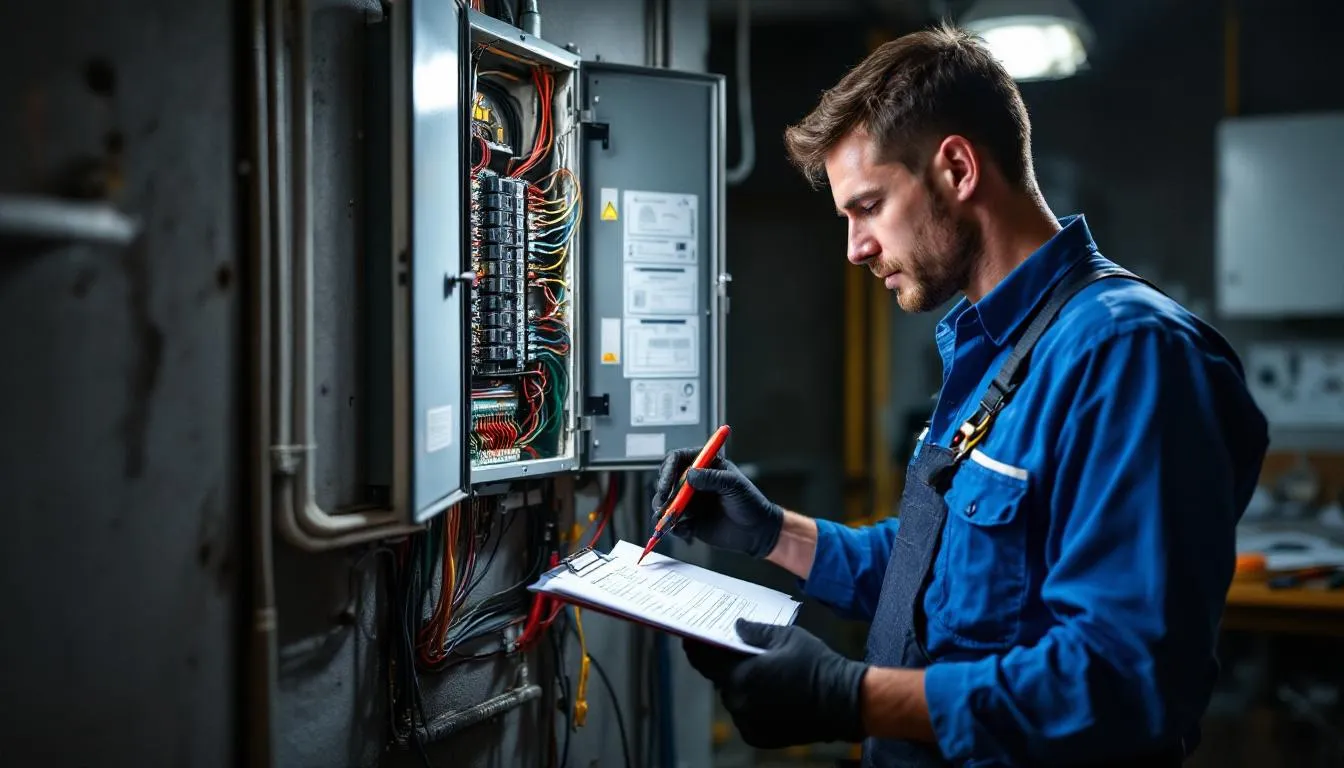
Safety devices like Ground-Fault Circuit Interrupters (GFCIs) and Arc-Fault Circuit Interrupters (AFCIs) are essential for preventing electrical hazards. GFCIs protect against electric shock and electrocution caused by ground faults, while AFCIs prevent electrical fires by detecting and interrupting arc faults.
These devices are crucial for enhancing electrical safety and are mandated by the NEC for various installations.
GFCI Protection Requirements
Ground Fault Circuit Interrupters (GFCIs) are essential in areas prone to moisture, such as bathrooms, kitchens, and outdoor locations. The 2020 NEC expanded GFCI requirements to include receptacles up to 250 volts in certain areas. GFCIs significantly reduce the risk of electric shock by quickly shutting off power when a ground fault is detected.
GFCIs are now required in all basements, regardless of whether they are finished or not. Installing GFCIs in these locations enhances electrical safety by preventing electrical shocks and potential injuries.
Proper installation and maintenance of GFCIs are crucial for ensuring their effectiveness.
AFCI Installation Guidelines
Arc-Fault Circuit Interrupters (AFCIs) are required to prevent electrical fires in residential settings. The NEC mandates AFCI protection for 120-volt, single-phase circuits in areas such as living rooms, kitchens, bedrooms, and other living spaces. These devices detect hazardous arc faults and interrupt the circuit to prevent fires.
AFCIs must be installed on circuits that supply outlets in various high-risk locations to enhance safety. Preventing arc faults, AFCIs reduce the risk of electrical fires and enhance the safety of residential electrical systems. Proper installation and compliance with NEC mandates are essential for their effectiveness.
Labeling and Identification of Electrical Panels
Proper labeling and identification of electrical panels are crucial for ensuring safety and compliance with NEC standards. Clear and durable labels help prevent confusion, facilitate maintenance, and enhance overall electrical safety.
The NEC outlines specific requirements for labeling circuits and identifying disconnecting means, ensuring that electrical panels are easily understandable and accessible.
Labeling Requirements
NEC 408.4 mandates that each circuit must have a legible, permanent description that indicates its purpose. These descriptions:
- Help prevent operational errors by ensuring that each circuit is easily identifiable.
- It is essential to avoid confusion between different circuits.
- Ensure that maintenance can be performed safely and efficiently.
The circuit directory can be placed on the panel face, inside, or in an approved location next to the panel door. Proper labeling enhances safety by providing clear reference points for electricians and maintenance personnel, ensuring that electrical panels are compliant with NEC standards.
Identification of Disconnecting Means
The NEC requires the following for the main disconnecting means and service disconnects:
- They must be readily identifiable and accessible to ensure quick operation during emergencies.
- Service disconnects must be identified and located for easy access.
- Identification includes clear labels that describe their function and usage.
- These measures ensure they can be operated quickly and safely in case of an emergency.
The 2023 NEC requires that the purpose and location of disconnecting means be marked clearly, unless their intent is obvious. Proper identification of disconnecting means is crucial for ensuring safety and compliance, allowing for quick and effective responses during electrical emergencies.
Weatherproofing for Outdoor Electrical Panels
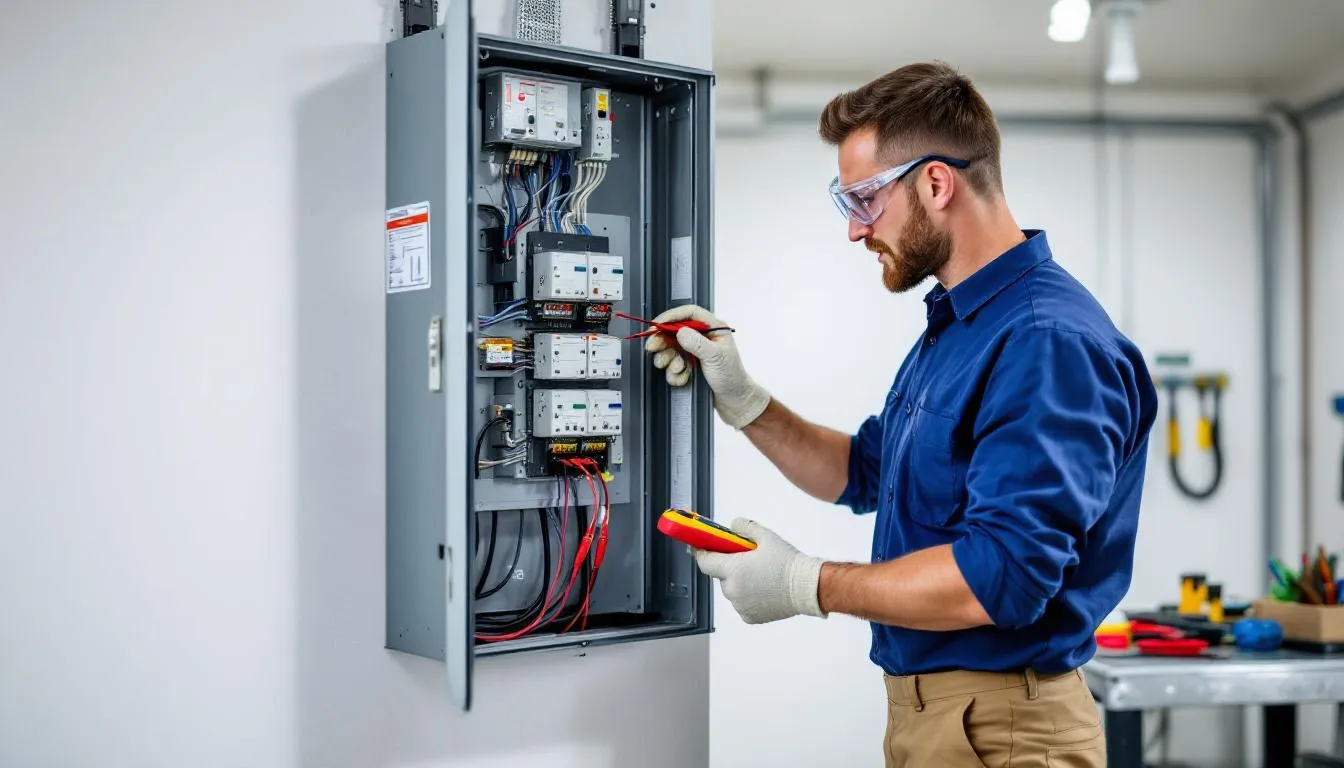
Weatherproofing is essential for outdoor electrical panels to prevent moisture and corrosion, which can lead to electrical hazards. The NEC emphasizes the need for adequate shielding of outdoor panels to ensure safe operation.
Proper enclosure ratings and installation techniques are crucial for protecting outdoor electrical panels from environmental factors.
Enclosure Ratings and Specifications
Outdoor electrical enclosures must meet specific NEC ratings to ensure they are suitable for wet conditions. Enclosures are rated based on their ability to withstand environmental conditions, with NEMA 3R enclosures designed for outdoor use, protecting against rain and sleet. NEMA 4X enclosures offer enhanced corrosion resistance, making them ideal for harsh outdoor conditions.
Using appropriate enclosures for outdoor electrical panels is crucial for preventing moisture ingress and ensuring long-term reliability. These enclosures help protect electrical equipment from environmental damage, ensuring safe and efficient operation.
Installation Tips for Outdoor Panels
When installing outdoor electrical panels, consider the following:
- Use weather-resistant materials.
- Ensure panels are accessible from the ground.
- Properly seal and weatherproof the installation site to prevent moisture ingress and ensure long-term reliability.
- Securely mount the panels according to NEC guidelines to prevent damage from weather conditions and ensure electrical system safety.
Proper installation techniques help maintain the integrity of outdoor electrical panels, ensuring they operate safely and effectively in various environmental conditions. Adhering to NEC guidelines for outdoor installations enhances safety and reliability.
Common Hazards and How to Avoid Them
Electrical hazards can lead to severe injuries or fatalities, often due to inadequate training or failure to recognize risks. Common electrical hazards include:
- Overloading circuits
- Overheating wires
- Improper grounding. Understanding these hazards and knowing how to avoid them is crucial for ensuring electrical safety.
Regular maintenance and adherence to NEC standards can significantly reduce the risk of electrical accidents.
Overloading and Overheating Risks
Electrical panels must not be overloaded because:
- Overloading can lead to overheated wires.
- Overheated wires create a significant fire hazard.
- Overloading circuits is a primary cause of electrical fires.
- Using wires that cannot handle the electrical load can cause overheating and potential fires.
To prevent electrical hazards such as fires due to overloaded panels, consider the following:
- Utilize proper circuit breakers to mitigate the risk of fires.
- Avoid using extension cords for multiple high-wattage devices to prevent circuit overload.
- Ensure proper circuit management to prevent these hazards.
Preventing Electrical Shock and Fire
Key electrical safety practices include:
- Installing dedicated circuits for high-draw appliances to significantly reduce the risk of electrical fires.
- Following proper grounding and bonding practices, as mandated by the NEC, reduces the risk of electrical shock and fire hazards.
- Performing regular maintenance of electrical panels to help prevent hazards like fires and failures, ensuring safety and reliability.
Routine inspections, including voltage and insulation resistance testing, can help identify potential issues before they escalate. Adhering to NEC standards and performing regular maintenance are essential steps in preventing electrical hazards and ensuring the safety of electrical systems.
Maintenance and Inspection Best Practices
Regular maintenance and inspections are crucial for identifying and rectifying potential hazards in electrical systems. Inspections by qualified electricians help maintain electrical systems, preventing hazards such as shock and fire.
Following a routine inspection checklist and adhering to maintenance tips can significantly enhance the safety and longevity of electrical panels, as noted in this review.
Routine Inspection Checklist
An effective inspection checklist includes checking for physical damage, ensuring circuit breaker capacity, and verifying the tightness of electrical connections. Voltage testing during inspections is vital to identify irregularities that could damage wiring and prevent electrical surges. Verifying the tightness of electrical connections can significantly reduce the risk of overheating and enhance safety.
Routine inspections help ensure that electrical panels remain functional and compliant with NEC standards. Following this checklist can significantly decrease the risk of electrical hazards and ensure the efficiency of the electrical panel.
Maintenance Tips for Longevity and Safety
Routine maintenance can extend the lifespan of electrical panels by proactively addressing wear, corrosion, and potential safety hazards. Keeping electrical panels clean and free from dust and debris can significantly extend their lifespan and improve safety. Regular maintenance helps protect electrical systems, ensuring they operate efficiently and safely for years to come.
Proper lighting around electrical panels is also essential for safety during maintenance and inspection. Ensuring that panels are free from obstructions and easily accessible helps maintain their functionality and safety. Regular maintenance and adherence to NEC standards are key to preventing electrical hazards and ensuring the longevity of electrical systems, including proper illumination.
Local Expertise and Professional Services
Hiring local electrical experts, such as Tradesman Electric, provides numerous benefits, including faster response times for installations and repairs, and a deep understanding of local codes and standards. Local experts can offer personalized service and immediate support, ensuring that your electrical system is installed and maintained safely and efficiently, contributing to the overall development of your infrastructure.
Why Choose Tradesman Electric
Tradesman Electric has a strong reputation in Orange County for quality workmanship and compliance with electrical codes. Our commitment to high-quality installation and maintenance services tailored to local needs ensures that your electrical system meets all safety and compliance standards.
Choosing Tradesman Electric means you benefit from:
- Expert knowledge of local and NEC standards.
- High-quality workmanship ensures safety and efficiency.
- Fast response times for installations and repairs.
- Personalized service tailored to your specific needs.
Contact Us for Your Electrical Needs
For all your electrical needs, reach out to Tradesman Electric. Our team of skilled professionals is ready to ensure that your electrical system is safe, compliant, and efficient. We offer personalized service and local references to ensure your confidence in our work.
Contact us today to schedule an inspection or consultation. Trust Tradesman Electric to handle all your electrical installations, repairs, and maintenance needs efficiently and safely in your house. Your safety and satisfaction are our top priorities.
Summary
Ensuring electrical safety and compliance with the NEC is essential for preventing hazards and protecting both property and lives. From proper panel installation and grounding to the use of safety devices like GFCIs and AFCIs, adherence to NEC standards is crucial. Regular maintenance and inspections further enhance safety and reliability. By choosing local experts like Tradesman Electric, you can be confident that your electrical systems are in expert hands. Prioritize electrical safety and compliance to protect your home or business.
Frequently Asked Questions
Why is NEC compliance important for electrical installations?
NEC compliance is essential for minimizing electrical accidents and ensuring the safety and reliability of electrical systems. Adhering to these standards fosters a secure environment for users and prevents potential hazards.
What are the key NEC articles relevant to electrical panels?
The key NEC articles relevant to electrical panels are NEC 408, which addresses circuit breaker and panel ratings, and NEC 250, which outlines grounding and bonding requirements. Compliance with these articles ensures safety and proper function in electrical installations.
What are the minimum clearance requirements around electrical panels?
The minimum clearance requirements around electrical panels are 3 feet in front and a workspace width of 30 inches or equal to the panel width, whichever is greater. Adhering to these specifications is essential for safety and accessibility.
Why are GFCIs and AFCIs important for electrical safety?
GFCIs are crucial for preventing electric shock by detecting ground faults, while AFCIs play a vital role in fire prevention by identifying and interrupting arc faults. Together, they significantly enhance electrical safety in residential and commercial settings.
How can Tradesman Electric help with my electrical needs?
Tradesman Electric can assist with your electrical needs by providing expert knowledge of local and NEC standards, ensuring high-quality workmanship, fast response times, and personalized service for a safe and compliant electrical system.
